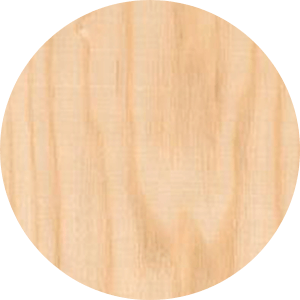
Scientific Name:
Fraxinus spp.
Other names and Related Species:
American Ash, Northern Ash, Southern Ash.
Description of the Tree:
American ash is similar in appearance to European ash. The sapwood is light, almost white, and the heartwood ranges from gray brown to light brown, or pale yellow with brown knots. The wood generally has a straight vein with a uniform rough texture. The degree and availability of the slightly colored sapwood, as well as other properties, varies depending on the growth regions.
Physical Properties:
Ash has good resistance characteristics in respect to its weight. It has excellent impact resistance and gives good results in steam bending.
Specific gravity: 0,60
Average weight: 673 kg/m3
Medium volumetric shrinkage: 10,7%
Elasticity modulus: 11.977 MPa
Stiffness: 5871 N
Region of Occurrence:
All over the Eastern United States.
Durability:
It’s not resistant to decomposition. The sapwood is susceptible to the attack of moths and common furniture coleopters. The heartwood is slightly resistant to preservative treatment and the sapwood is permeable.
Availability:
USA: readily available.
Export: good availability as sawn and laminated wood. Sawn timber is generally classified according to the growth region and is sold as northern and southern ash. Sometimes it is sorted by color and sold as white ash (sapwood) or brown ash (heartwood).
Fraxinus nigra, black ash, can also be marketed as brown ash.
Workability:
Ash wood easily undergoes mechanical work and is also easy to nail, screw and glue. It can be painted and polished to obtain an excellent finish. It dries quite easily, with a minimum of waste and little variation in final yield.
Suggested Uses:
Furniture, floors, doors, interiors, high quality joinery and frames, kitchen cabinets, panels, tool handles, sports goods and turned products.
Source: REMADE
